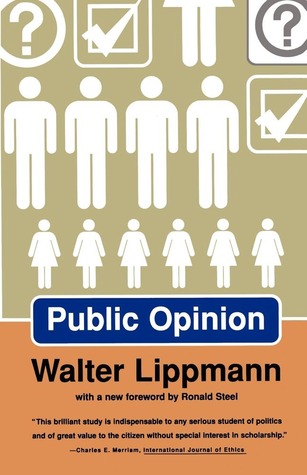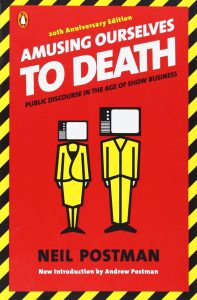In Public Opinion, Walter Lippmann explained the “difficulties of public opinion” in a democratic society (19). The power of “public opinion became greater than that of the legislative branch of government” (xi). The reporting and the protection of public opinion sources became the basic problem of democracy” (xi). Instead of the “omnicompetent citizen” making reasoned judgments” on public issues, people created their public opinion based on “the pictures inside their heads of human beings, the pictures of themselves, of others, of their needs, purposes and relationships” (18). Those “pictures” misled men in their dealings with the world outside. The pictures led to individuals creating stereotypes that identified with their own interests.
The world that people deal with politically “is out of reach, out of sight and out of mind” (18). Great men, according to Lippmann, “exist to the public through a fictitious personality” (5). Fictions and symbols played an important role in understanding human communication. Individuals experience the world by “exploring, reporting and imagining” (18). Instead of experiencing real events, people learned to “see with their mind vast portions of the world that they could never see, touch, smell, hear or remember” (18). Thus, people began to create “trustworthy pictures inside their heads” to form their public opinion” (18).
Certain factors limited people from getting access to information and altered the way people understood the world. Censorship and privacy presented “barriers” that intercepted information between the public and the event (29). The monopolizing of cost and available supply, the income of an individual and the social elite “presented distinct limits upon the circulation of ideas” (30). Other limitations, such as time, the poverty of language and the unconscious constellations of feeling, limited the spread of ideas. “These limitations upon our access to the environment combine with the obscurity and complexity of the facts themselves to thwart clearness and justice of perception, to substitute misleading fictions for workable ideas” (49).
Stereotypes, prejudices and self-interests affected the public opinion of people and how people viewed the world. A report consists of the “joint product of the knower and the known, in which the role of the observer is always selective and usually creative” (54). Thus, the “facts people see depend on where they are placed, and the habits of their eyes “(54). People learn about the world before they see it. They imagine most things before they experience them. People accept stereotypes to decrease their effort of thought and defend their positions and self-respect in society. “The stereotype preserves people from the bewildering effect of trying to see the world steadily and see it whole” (75). Moral codes influenced the perceptions of individuals. Public opinion, Lippmann said, “is primarily a moralized and codified version of the facts” that varies from one person to the next (82). “People accept these facts, whether true, realistic, good, evil or desirable, through stereotypes, from earlier experiences that carry over into judgment of later ones” (107).
Lippmann discussed the idea of establishing common will. People think differently about the pictures in their heads. According to Lippmann, many “variables affect individuals’ impression of the invisible world” (125). Ideas and universal symbols allowed people to express their individual opinions. Some “images fade but the emotion from those images continue” (131). Public figures used symbols, such as “Law and Order, Justice and Humanity, to amalgamate the emotion of conflicting factions” (133). People use symbols to “make connections with the outer world through certain beloved and authoritative persons” (142). Authorities or “a small number of heads present a choice to a large group of people” for agreement or approval in society (148). Leaders often think they uncovered a program that existed in the minds of their public. Thought, however, represents a function of an organism and a mass is not an organism. “The mass obscures the fact because suggestion” alters their beliefs (155).
Lippmann discussed the image of democracy. According to Lippmann, the “democrat knows that in dealing with an unseen environment decisions are manifestly settled at haphazard” (171). The public opinion of any community about the outer world “consisted of a few stereotyped images arranged in a pattern deduced from their legal and their moral codes, and animated by the feeling aroused by local experiences (174). The way people exhibit their interest, according to Lippmann, “will not hinder the functions of a functional society” (193). Thus, no individual will arrive at sound public opinions on the whole business of government. “It is extremely doubtful, according to Lippmann, that “many would wish to take the time to form an opinion on any and every form of social action that affect them” (197).
Newspapers and organized intelligence played a role in shaping the public opinion of individuals. People felt that the “newspaper should serve them with the truth however unprofitable the truth may be” (203). News “signalized an event” (226). “Truth brought to light the hidden facts” (226). According to Lippmann, the intelligence system serves as source of general information. “It is an instrument of the man of action, of the representative charged with the decision, of the worker at his work, and if it does not help them, it will help nobody in the end” (250).



